From the first experiments to a unique instrument. Trends in the development of domestic thermonuclear weapons
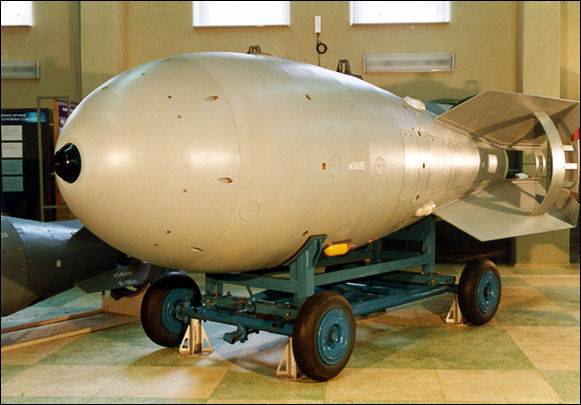
Museum model of the RDS-6s air bomb. Photo militaryrussia.ru
August 2023 marks the 70th anniversary of the test of the first Soviet thermonuclear warhead. This event demonstrated the ability of our industry to create the most advanced weapons, and also determined the path for the further development of nuclear forces. Over the past decades, thermonuclear weapons have come a long way - and still remain one of the foundations of strategic deterrence and national security.
The first experiments
As is known, the first topic of thermonuclear (hydrogen) weapons the US took over. The idea itself appeared in the early forties, and its full implementation began in the second half of the decade. Calculations showed that a conventional nuclear charge has limitations in terms of power, and further growth of this parameter requires new operating principles. In this capacity, they decided to use the nuclear fusion reaction of light elements, and the next few years were spent on research and development of a thermonuclear charge.
The Soviet thermonuclear project started later - in 1949, when the first test of a conventional nuclear bomb was being prepared. Soviet specialists managed to close the gap with their American rivals quite quickly. Moreover, soon they even managed to get ahead and were the first to create a full-fledged ammunition of a new type, suitable for use.
On November 1, 1952, the United States conducted a test under the code Ivy Mike on Enewetak Atoll - the world's first detonation of a thermonuclear weapon. However, the latter was an exclusively experimental product: it was made in the form of a stationary building with the necessary equipment. Such a charge was able to demonstrate the general principles of operation, but there was no question of practical application.
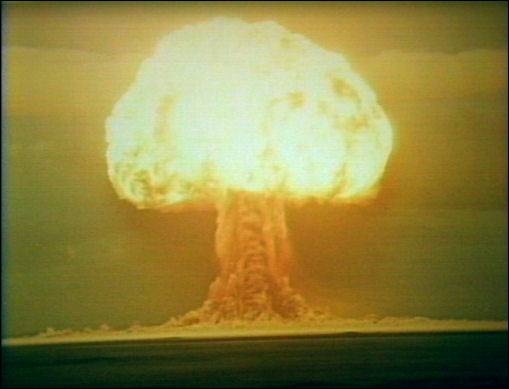
Undermining the first experimental RDS-6s. Photo by the USSR Ministry of Defense
On August 12, 1953, the first Soviet thermonuclear charge, RDS-6s, was detonated at the Semipalatinsk test site. Unlike the American product, it was a complete aviation bomb. It had acceptable dimensions and weight and could be used by the latest Tu-16 bombers or other carriers.
Thus, the possibility of creating ammunition based on nuclear fusion was determined theoretically and confirmed in practice. This allowed the two leading countries to start developing new warheads suitable for adoption and hypothetical use against enemy targets.
Performance race
The solutions found and tested formed the basis of new projects of full-fledged weapons for the armies. In addition, scientists were looking for new schemes and architectures of thermonuclear munitions, which would increase the energy yield, reduce the size of the charge, etc. All these processes led to the emergence and adoption of a number of products with certain features. Some of these charges successfully reached the point of being put into service, while others remained experimental.
The first munition of the new class, adopted for service, was the American free-fall bomb TX-16 / EC-16. It was based on developments on the Evie Mike theme, which is why it had a length of more than 7 m and weighed 19 tons with a power of 6-8 Mt. In 1954, only five such products were assembled, and only one B-36 bomber was converted for their use. At the first opportunity, the TX-16 was abandoned and replaced with more advanced weapons.
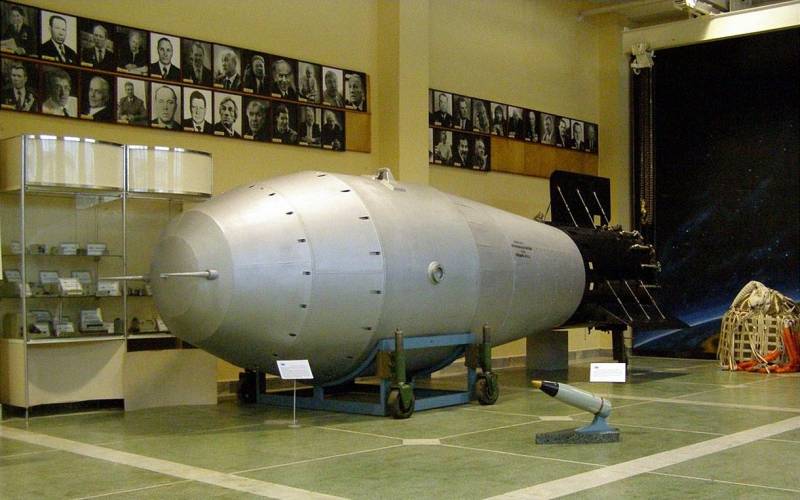
AN-602 in the museum. Photo by Wikimedia Commons
In turn, the USSR Air Force, after the necessary refinement of the design, adopted the existing RDS-6s bomb. Also, on the basis of this product, new warheads were created. So, in the autumn of 1955, three successive tests of the RDS-27 and RDS-37 bombs were carried out. The latter showed a capacity of 1,6 Mt and became the first Soviet weapon to cross the megaton line.
Over the next few years, the industry produced such weapons in small batches and gradually reduced the gap from a potential enemy in terms of quantitative and qualitative indicators. Various tests were also regularly carried out and new samples were created. Modified versions of the RDS-37 were developed with certain features, and work was also underway on completely new charges. They are known under the codes RDS-46, RDS-49, etc.
According to known data, in October 1958 the first test of a thermonuclear warhead designed for the world's first intercontinental ballistic missile took place. The ammunition for the R-7A rocket confirmed the estimated yield of 2,8 Mt, and then it was put into series.
The availability of all the necessary technologies made it possible to develop a number of different charges. They differed in size and power, and were also intended for different delivery vehicles - first of all, unguided aerial bombs and warheads for missiles of various types were created. The power of such products ranged from hundreds of kilotons to several megatons.
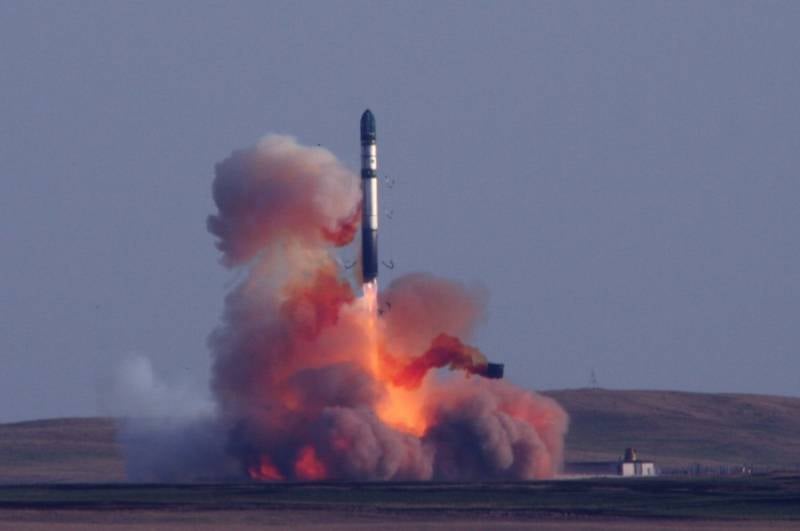
R-36M missile capable of carrying heavy warheads. Photo by the Ministry of Defense of the Russian Federation
In 1961, the most interesting domestic thermonuclear munition, the bomb "30" / "V" / AN-202, was developed and tested on October 602 at the Novaya Zemlya test site. The design capacity of this product was unique 50 Mt, the actual one was 58 Mt. At the same time, the design made it possible to increase the energy output to 100 Mt. The bomb "202" did not become a regular weapon of the Air Force, but it demonstrated the potential of the technologies used, and also showed a potential enemy how the USSR could respond to its threats.
In 1962, a new series of tests of warheads of unknown types, characterized by increased power, took place. Several products with a capacity of megatons were successively blown up, incl. two for 10 Mt, as well as charges for 19,1 and 20 Mt. In the latter cases, a monoblock warhead for the promising R-36 missile was tested.
New trends
Shortly after a number of remarkable and unique tests of thermonuclear weapons, several events occurred that influenced its further development. In addition, in the sixties, some new characteristic factors and trends were formed, the influence of which is still observed.
In January 1963, the Soviet leader N.S. Khrushchev visited the GDR. As a guest of honor, he spoke at the congress of the Socialist Unity Party of Germany. Then, for the first time, he officially spoke about the presence of super-powerful hydrogen weapons in the USSR. Not so long ago, the Caribbean crisis ended, and this statement did not go unnoticed. However, there were no negative events.

Loading rocket "Topol-M" in the mine. The product is equipped with a monoblock warhead with a capacity of hundreds of kilotons. Photo by the Ministry of Defense of the Russian Federation
On the contrary, the official recognition of the existence of thermonuclear weapons had a positive effect on international relations. Already in August of the same year, the USSR, the USA and Great Britain signed the Treaty on the Prohibition of Tests of Nuclear Weapons in the Atmosphere, in Space and Under Water. For several decades after that, until the Comprehensive Test Ban Treaty came into being, testing of nuclear and thermonuclear products was carried out only in underground facilities, which limited their power.
The new restrictions ruled out setting new power records. In addition, new trends have emerged that have made it possible to abandon tens of megatons of ammunition. The new warheads were distinguished by great design perfection and reduced power. At the same time, they could fully solve all the proposed tasks.
There has also been progress in delivery vehicles. The guidance accuracy has increased, and split warheads have also appeared. All this made it possible to solve the assigned tasks without the use of warheads with a capacity of megatons - complex, expensive and not always expedient. Nevertheless, they were in no hurry to get rid of megaton-class products, and they remained in service.
Latest Results
For obvious reasons, accurate story domestic thermonuclear weapons in recent decades remains closed. Nevertheless, there is some information showing the main trends in its development, as well as illustrating the current state of this direction. In general, significant changes and evolutionary processes are noticeable.
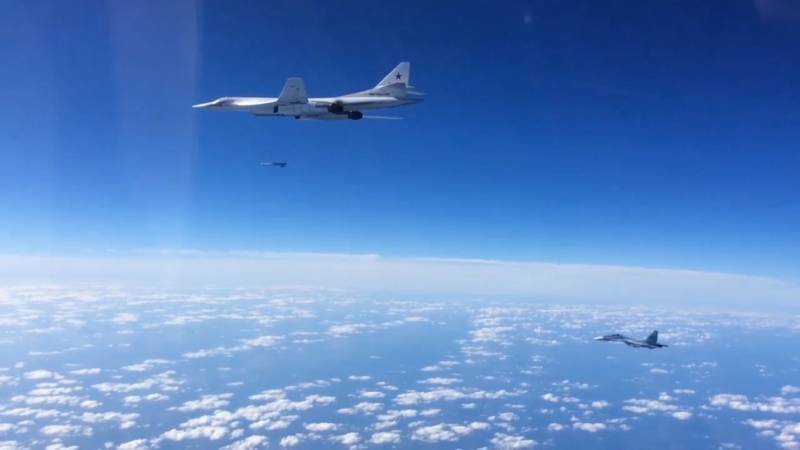
Tu-160 bomber launches X-55/555 missile. If necessary, such a product carries a special warhead. Photo by the Ministry of Defense of the Russian Federation
According to known data, thermonuclear equipment is now used mainly in strategic nuclear forces as part of various missile systems. Special warheads are installed on land-based and sea-based ICBMs. Also, similar charges are placed on air-launched cruise missiles. In addition, there is a certain stockpile of tactical nuclear weapons.
As far as is known, the bulk of the strategic nuclear forces arsenals are warheads with a yield of no more than hundreds of kilotons. They have an optimal combination of dimensions, weight and power, and regular carriers provide the necessary range and accuracy. Some missile systems are still equipped with megaton-class warheads, but these are mostly obsolete products. However, according to some estimates, the new Sarmat missile can receive a high-power monoblock warhead.
Development results
One way or another, the current state of strategic and tactical thermonuclear weapons corresponds to the plans and requirements of the Ministry of Defense. It meets the tasks of strategic nuclear deterrence and must ensure the reliable defeat of the intended targets on the territory of a potential adversary. Such capabilities are regularly demonstrated during exercises and tests, however, since 1963, only delivery vehicles have actually undergone such tests - they carry practical warheads; the use of real ones is not provided.
It should be noted that the current state of affairs in the field of strategic deterrence and national security is based on the experience and developments of the past. The scientific and technological foundation for current developments and processes has been laid since the end of the forties and has been constantly developed and supplemented. As a result, our country has a unique and numerous security tool capable of responding to the most serious threats. And besides, there are all the technologies and competencies for further development.
Information